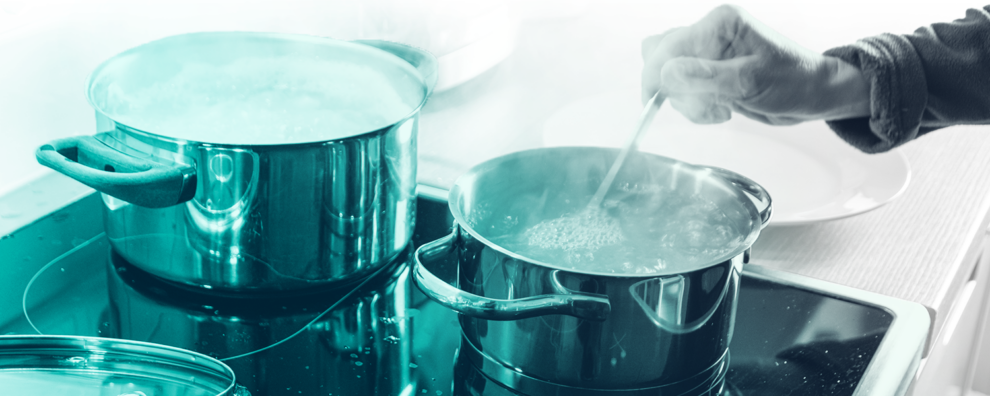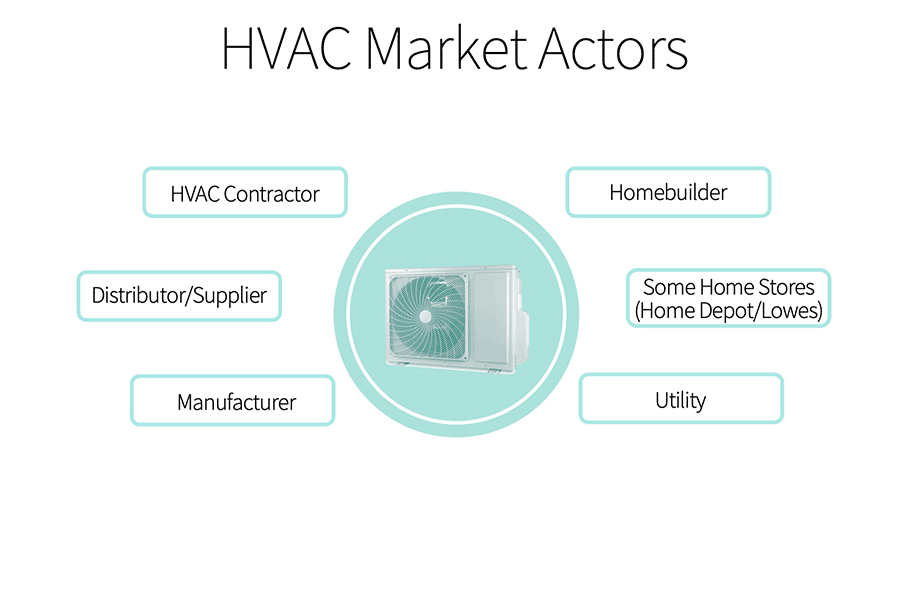
ILLUME’s recent participation at the 2023 Behavior, Energy, and Climate Change (BECC) conference showcased Director Dr. Liz Kelley’s presentation on induction stoves and the impact of market actors on energy-efficient technology dynamics. The presentation drew on two ILLUME research studies, the first involved interviews and secondary research with utilities and market actors to grasp broader induction stove market dynamics. The second comprised 121 in-depth interviews with homeowners and renters across four states, focusing on general decision-making processes rather than specific technologies. Discussions explored equipment, repairs, and upgrades to understand their implications for overall energy consumption and carbon footprint. In this blog post, Liz shares key insights and highlights from her BECC presentation and the innovative discussions that unfolded afterward.
The Induction Stove Ecosystem
Traditionally, residential energy efficiency (EE) programs have focused on appliances or technologies that are not designed to be central focal points in homes and are often installed in less frequently used areas like basements or garages. ILLUME research revealed that how people view, purchase, and use their stoves is very different from water heaters, HVAC, and thermostats. One thing became very clear as I prepared for my BECC presentation – the energy efficiency program landscape needs to change to promote the adoption of induction stoves.
Stoves Are Different
While contractors, suppliers, distributors, and home builders may suggest and install stoves, additional players include kitchen and interior designers, celebrity chefs, influencers, and sales teams at appliance and big box stores. This dynamic is notable in single-family homes, where the decision-maker often doubles as the primary user. It’s important to acknowledge the distinct situation in multifamily buildings, which is not explicitly discussed here.

SOLUTION
Programs should involve a diverse range of market actors, such as realtors and kitchen designers, to accurately reflect the various influences on stove and kitchen decisions.
Induction Stoves Are Unfamiliar
“If someone is spooked by induction, then I need to address their concerns first because it doesn’t matter if the house is otherwise perfect. About 60% of my clients are going to struggle with induction stoves, and for those who are openminded, then a good strategy is to bond with them in the practice of cooking.”
-Realtor
The ILLUME research team interviewed different induction stove market actors and consistently heard that many people are unfamiliar with induction cooktop technology and how it works. One realtor shared that their sales strategy of providing homebuyers the opportunity to try out an induction stove was the best way to alleviate concerns about switching to this technology. A different realtor shared that when clients are “spooked” by an induction stove, she connects with them through shared cooking experiences to address their apprehensions. Indeed, despite ILLUME Co-Founder, Sara’s energy industry and technology expertise, she shared in her 2023 blog post that she nearly passed on her current home because it had an induction stove, a decision she now celebrates.
Rethinking Cooking with Gas
“For people who do cook, it’s deeply personal and a point of pride — showing you can eat well and provide for your family.”
-Induction Stove Market Actor
Many people are passionate about cooking and that extends to their stoves in a way that is simply different than how they feel about any other appliance in their home. Stoves are in a central room in the home—the kitchen—and are used frequently. The U.S. Energy Information Administration (EIA) data reveals that over 50% of households use their stove more than twice daily. This level of frequency and duration of use whether you’re stirring, tasting, or adjusting the heat up or down, distinguishes it from an HVAC and water heater. Furthermore, cooking is a means to express care for family members and prepare recipes handed down from parents and grandparents.
SOLUTION
Ensure culturally relevant cookware and induction options are available to encourage wider adoption.
A recent Climate Change in the American Mind survey indicated that for 60% of Americans, the desire to keep their gas stove is the primary reason to resist fully electrifying their homes.
“I feel like gas cooks more evenly. You’ve got more control over gas too, it gets hot quicker versus waiting for an electric burner to heat up. Gas is instant.”
– AZ Homeowner
“I wouldn’t even know how to boil eggs on an electric stove.
– IL Homeowner
In our interviews with homeowners and renters across four states, they consistently praised gas stoves for their control, speed, and familiarity – all qualities that are highlighted in the gas industry’s marketing materials. ILLUME’s research also revealed that people are unfamiliar with induction stove technology and aren’t aware that induction technology is well-established and can boil water faster than on a gas stove.
SOLUTION
Utilities should develop marketing to increase consumer familiarity with induction technology and provide opportunities for people to try using an induction cooktop in big box stores.
Making the Switch
Switching to an induction stove is not easy to navigate whether one is switching from electric resistance or gas.
Electric resistance barriers: When switching from an electric resistance stove, the primary barrier is cost. Induction stoves cost significantly more than electric resistance stoves and typically require a minimum of 40 amps from the home breaker box and a high-voltage wall plug for power. This could result in the need for a panel upgrade.
Gas conversion barriers: The much bigger challenge is when switching from gas to electric. In this case, the cost barrier of the stove itself is still significant, although a higher-end gas stove can easily be comparably priced to an induction stove. Induction stove installations include an additional obstacle because they require capping a gas line. In ILLUME’s interviews, people shared they weren’t certain how to navigate converting from a gas to an induction cooktop.
“I have a gas stove in my home. If I were to switch to an induction stove, I’d have to go through the whole conversion. Who do I call for that? It seems like a lot. I don’t know where I would start.”
–Big Box Store Appliance Purchasing Manager
SOLUTION
Utility program support should offer scheduling assistance and accessible educational materials that outline the logistical steps involved in switching stove types.
Utility can pair rebates with additional forms of financial assistance that cover both the upfront cost and installation expenses of induction stoves.
Overcoming these barriers necessitates comprehensive and creative solutions that effectively tackle all types of challenges and support programs to advance the adoption of induction cooking.






